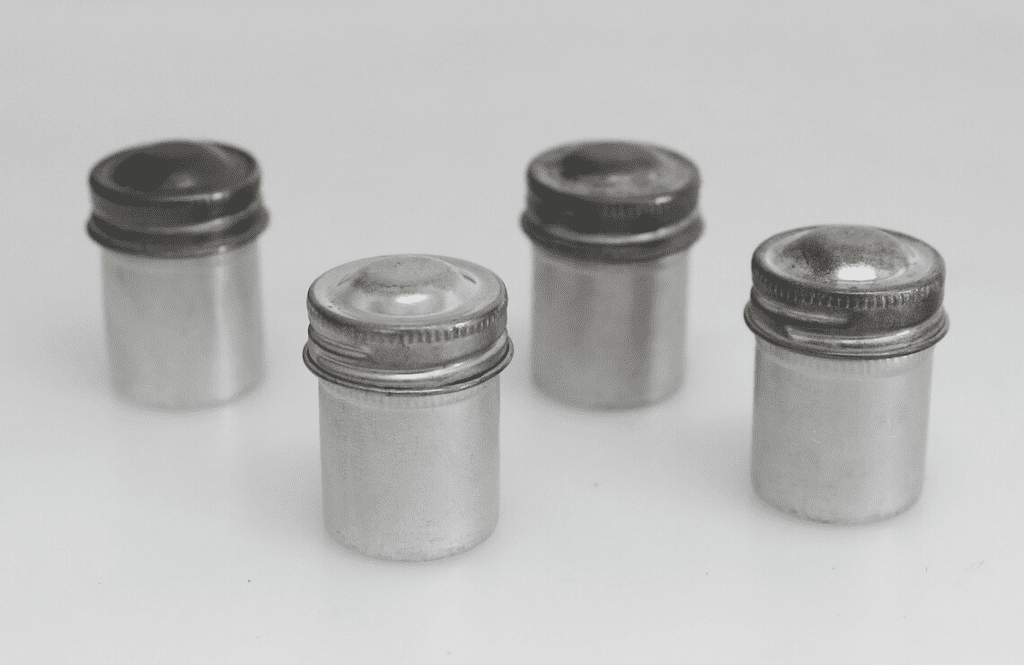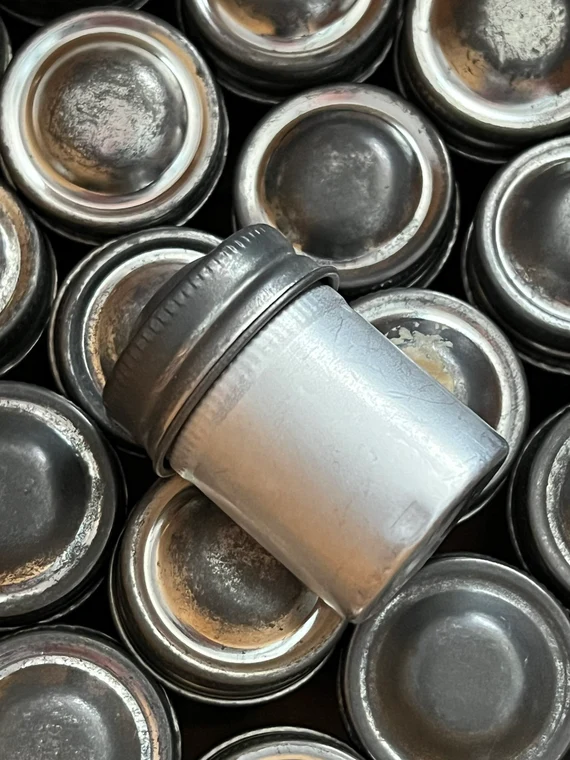In today’s digital era, the art of analog photography often feels like a lost craft. Yet, for many enthusiasts, the 35mm film camera holds an irresistible charm. From the thrill of capturing moments on film to the tangible satisfaction of holding a printed photograph, this form of photography carries a sense of authenticity and nostalgia. At the center of this captivating process are the iconic vintage metal Kodak film canisters—small yet vital containers that once safeguarded precious memories.
The Birth of 35mm Film: A Brief History

The origins of 35mm film trace back to the late 19th century when George Eastman, founder of Kodak, introduced flexible roll film, forever changing photography. This innovation made capturing moments more accessible to amateurs and professionals alike. By the early 20th century, 35mm film emerged as the industry standard, thanks to its compact size, versatility, and cost-effectiveness. These qualities allowed it to dominate the world of still photography for decades.
The Anatomy of Vintage Metal Kodak Film Canisters
A 35mm film canister is more than just a container; it’s an essential component of film photography. Here’s how it’s designed:
- Body and Cap: Typically crafted from metal or plastic, the canister consists of a cylindrical body that houses the rolled-up film. A light-tight cap seals the canister to protect the film from exposure.
- Light Protection: The metal construction ensures that the film remains safe from light leaks, preventing accidental exposure. This is crucial, as any unintended light exposure can damage the film and ruin the captured images.
- Durability: Metal canisters, in particular, offer superior protection against environmental factors such as moisture, dust, and heat. This durability makes them perfect for photographers who enjoy shooting outdoors in various conditions.
Why Film Canisters Matter: Protection, Portability, and Preservation
Film canisters serve several key purposes that go beyond merely housing film. Let’s dive into why these small containers are so important:
Protecting Film from Light and Environmental Hazards
One of the primary functions of a 35mm film canister is to shield the film from light. Even the smallest amount of light leakage can ruin an entire roll of film, making the canister’s design critical for maintaining image quality. The metal canisters were specifically built to withstand outdoor elements, allowing photographers to shoot in unpredictable conditions without worrying about moisture or debris compromising their film.
Portability and Convenience of 35mm Film Canisters
Film canisters are lightweight and compact, making them easy to carry. Whether you’re a street photographer capturing candid moments or an adventurer exploring scenic landscapes, these canisters fit conveniently into pockets or camera bags. Their portability also means you can carry multiple rolls of film, giving you the freedom to shoot continuously without missing a beat.
Artistic Appeal and Tangible Memories of 35mm Film
Shooting with 35mm film offers a distinct aesthetic that digital photography struggles to replicate. With its grainy texture, rich tones, and unique color rendition, film creates a timeless look that many photographers adore. Beyond the visual qualities, film also provides a tangible connection to the captured moments. Holding a developed negative strip and examining each frame brings a sense of satisfaction that digital files cannot match.
The Revival of Analog Photography: Why 35mm Film is Making a Comeback

In recent years, there has been a resurgence in the popularity of analog photography. The tactile experience, coupled with the unpredictability of film, has attracted a new generation of photographers. This revival has also led to increased demand for vintage metal Kodak film canisters, as many enthusiasts embrace the authenticity and craft of shooting with film.
Film photography enthusiasts, both beginners and professionals, are finding joy in the process of developing film, experimenting with different types of rolls, and exploring the creative potential of manual settings. For many, the imperfections of film—light leaks, overexposure, or color shifts—add character and uniqueness to their work.
Alternative Uses for Vintage Film Canisters: Beyond Photography
While film canisters are designed to protect and store film, their versatility doesn’t end there. Many creative photographers and DIY enthusiasts have found inventive ways to repurpose these small containers. Here are some practical and fun ways to use film canisters beyond their original purpose:
Storing Small Essentials
Film canisters are perfect for storing small items that need protection from the elements. Here are some items you can store:
- Masking Tape: Handy for photographers who use film cameras, as it helps keep light leaks at bay.
- Spare Batteries: If you use vintage film cameras that require batteries, such as the Lomo LC-A+, film canisters make ideal storage solutions for extra LR44 batteries.
- Color Gels for Flashes: For photographers experimenting with color splash flashes, film canisters provide safe and easy storage for small color gels.
Everyday Uses for Film Canisters

Film canisters aren’t limited to photography essentials—they also have practical uses in daily life:
- Coin Purse: These canisters can hold loose change, making them perfect for keeping your coins organized.
- Medicine Container: Ideal for storing small pills like aspirin or vitamins, film canisters can act as emergency medicine containers on the go.
- Condiment Holder: If you pack lunch regularly, use these canisters to carry small amounts of salt, pepper, or other condiments for quick access.
The Nostalgic Appeal of Vintage Film Canisters
Beyond their functionality, vintage Kodak film canisters evoke a sense of nostalgia. Collectors and analog photography enthusiasts often appreciate them not just as practical tools but as pieces of photographic history. Whether displayed as part of a photography collection or repurposed for new uses, these canisters serve as a reminder of the analog era—a time when the process of capturing moments was as important as the results themselves.
Conclusion: Embracing the Timelessness of Film Photography
Vintage metal Kodak film canisters are more than just containers—they represent an era of photography marked by creativity, anticipation, and craftsmanship. As analog photography continues its comeback, these iconic canisters remain relevant, serving both their original purpose and new, creative roles.
For photographers who want to experience the art of film photography or simply appreciate a piece of photographic history, exploring the world of 35mm film is a must. The magic of shooting with film lies not only in the images it produces but in the process itself. So, dust off your old camera, load up a roll of film, and let the nostalgia of the analog era bring your photography to life.


